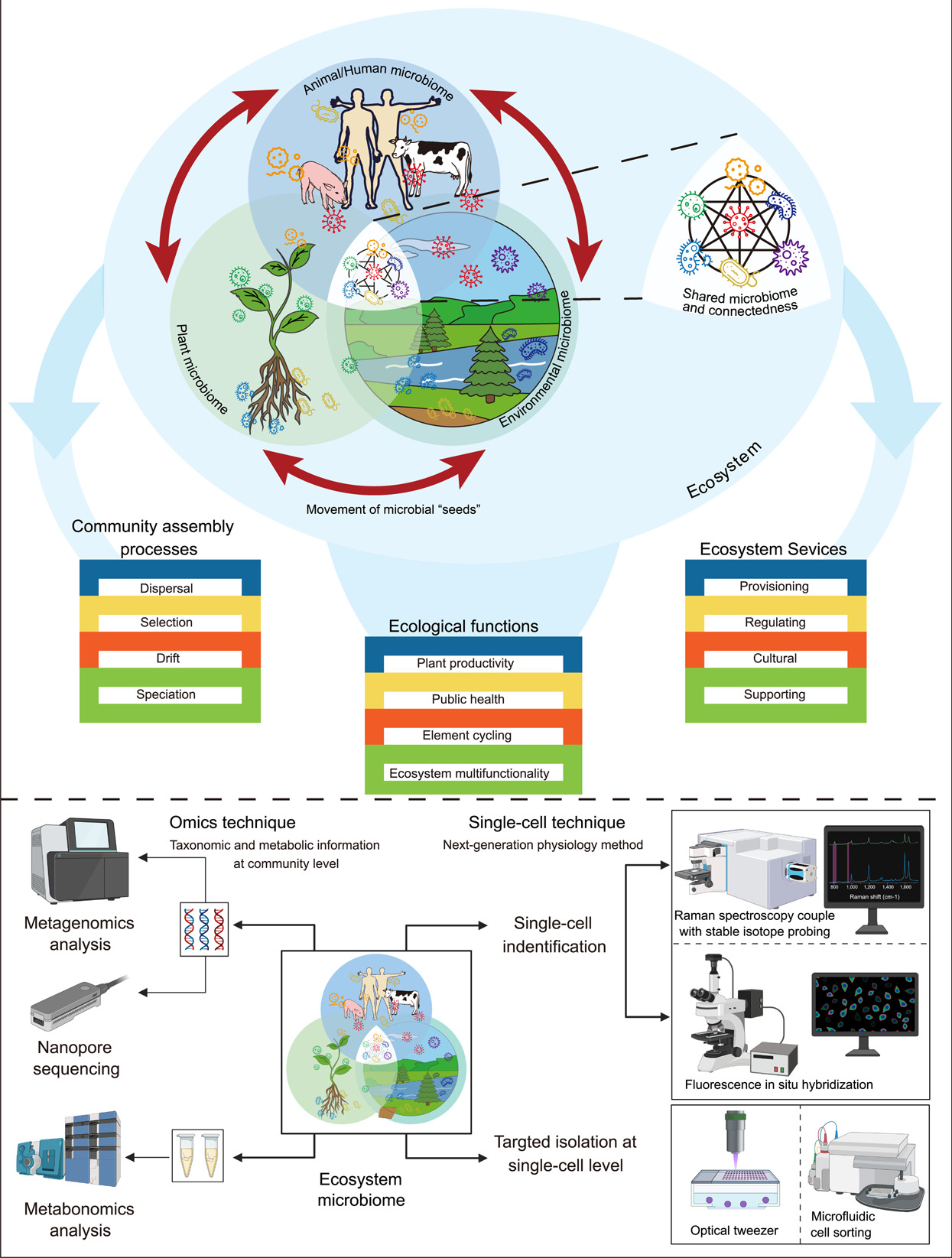| Location: Home > Papers |
| First Author: | ZHU Yong-Guan |
| Abstract: |
The microbiome contributes to multiple ecosystem functions and services through its interactions with a complex environment and other organisms. To date, however, most microbiome studies have been carried out on individual hosts or particular environmental compartments. This greatly limits a comprehensive understanding of the processes and functions performed by the microbiome and its dynamics at an ecosystem level. We propose that the theory and tools of ecosystem ecology be used to investigate the connectivity of microorganisms and their interactions with the biotic and abiotic environment within entire ecosystems and to examine their contributions to ecosystem services. Impacts of natural and anthropogenic stressors on ecosystems will likely cause cascading effects on the microbiome and lead to unpredictable outcomes, such as outbreaks of emerging infectious diseases or changes in mutualistic interactions. Despite enormous advances in microbial ecology, we are yet to study microbiomes of ecosystems as a whole. Doing so would establish a new framework for microbiome study: Ecosystem Microbiome Science. The advent and application of molecular and genomic technologies, together with data science and modeling, will accelerate progress in this field.
The concept of ecosystem microbiomes and a technique map to briefly show how to study microbial genomes and functions in whole ecosystems. In general, omics methods could provide taxonomic and metabolic information at the community level. The recently developed functional Raman spectroscopy-based single-cell technology as a next-generation physiology method could provide information on microbiome function at the single-cell level. |
| Contact the author: | ZHU Yong-Guan, Josep Penuelas,Michael Gillings |
| Page Number: | |
| Issue: | |
| Subject: | |
| Impact Factor: | |
| Authors units: | |
| PubYear: | January 2023 |
| Volume: | |
| Publication Name: | MLIFE |
| The full text link: | https://doi.org/10.1002/mlf2.12054 |
| ISSN: | |
| Appendix: |
